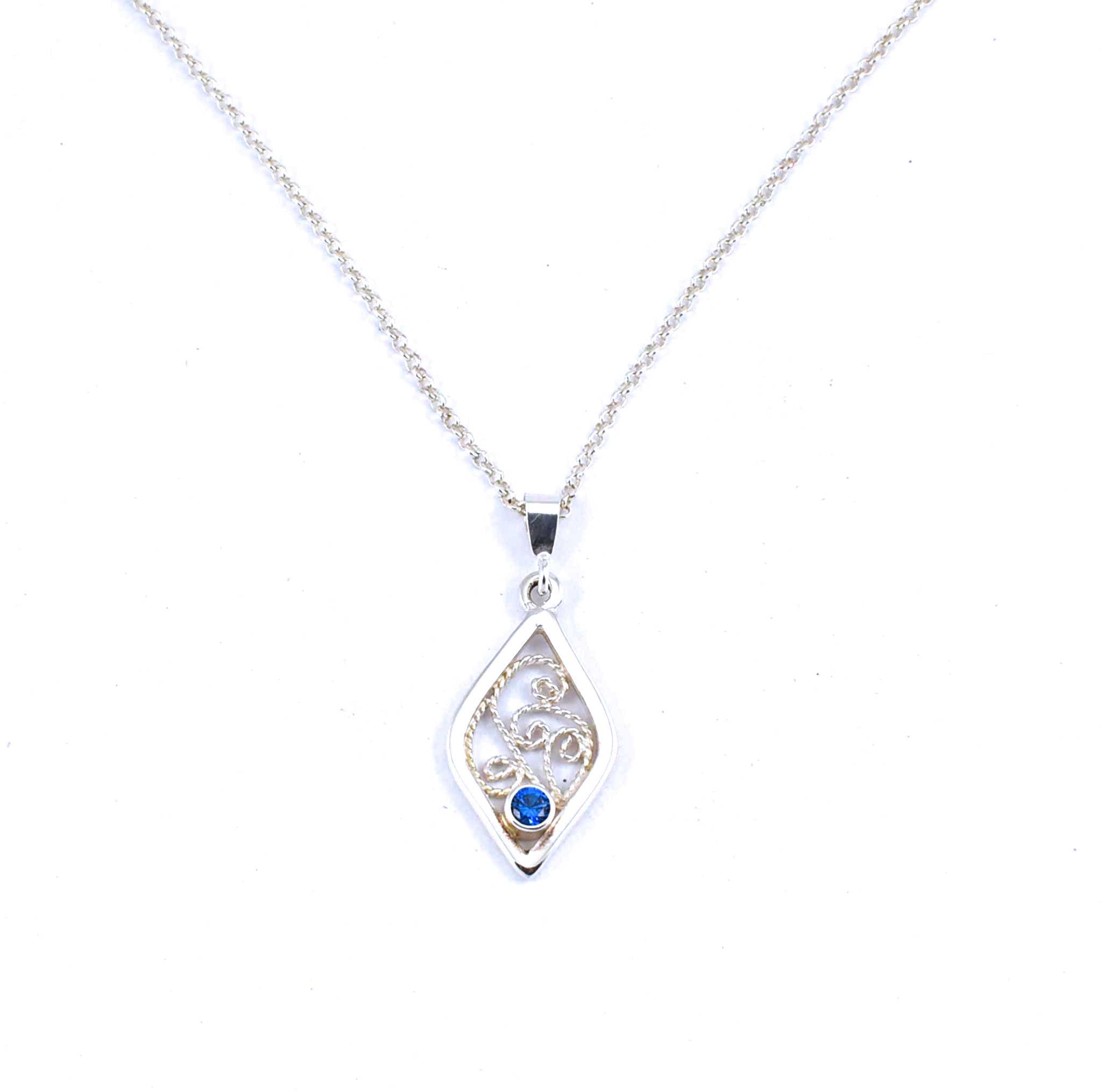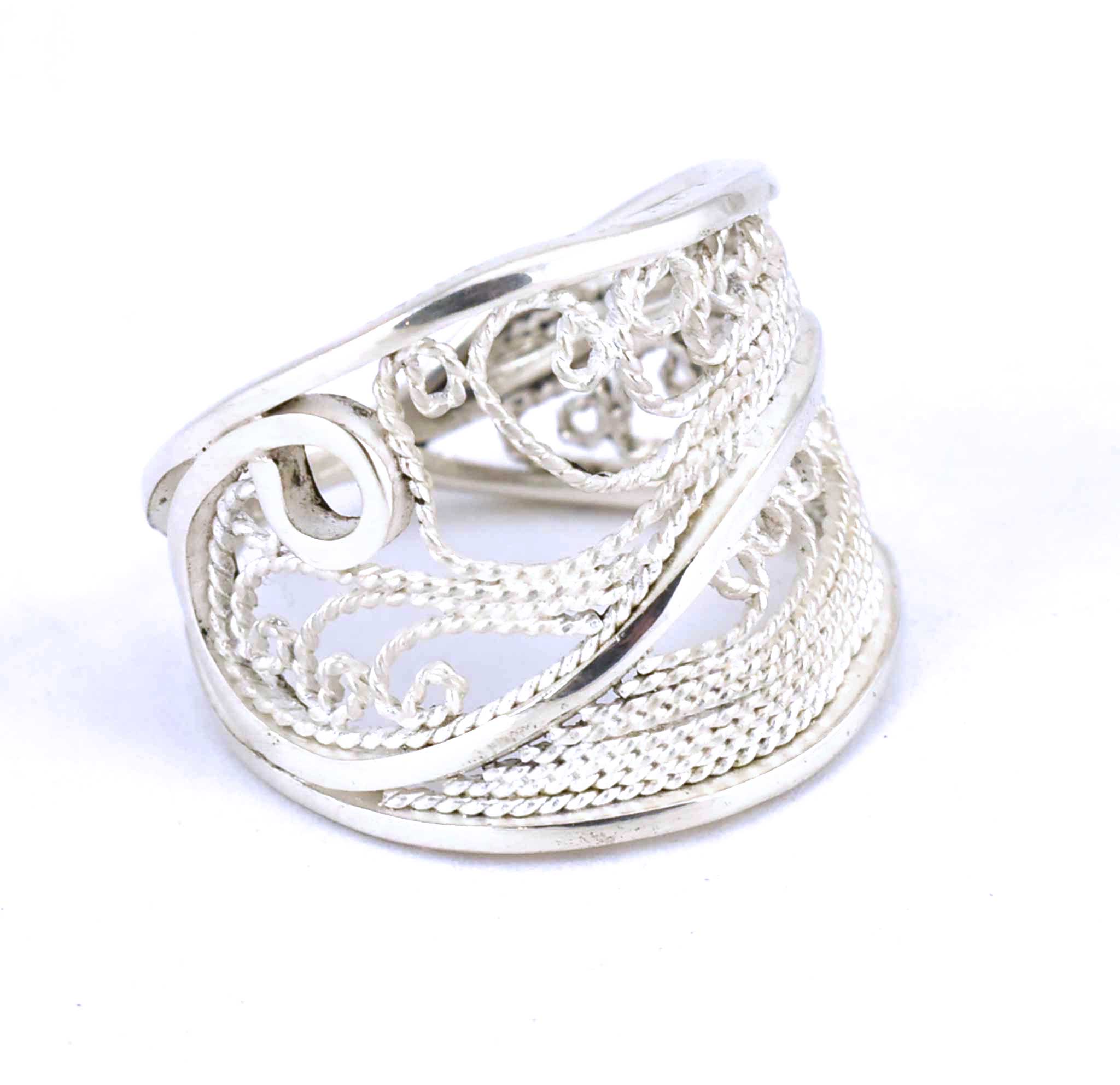
All About Sapphire
Properties
If you hear the word ‘sapphire,’ you probably think ‘blue,’ and for good reason. The name sapphire comes from the Greek word for blue.
When we think ‘sapphire,’ we think of a brilliant cornflower blue, but the idea that the gemstone only comes in blue is all a big misunderstanding. Sapphire is actually a type of mineral called corundum. In its pure form, it’s colourless, but with different trace elements in the mix, it can naturally come in green, yellow, orange, white, pink, purple, and yes, blue. A special peach-coloured sapphire is called padparadscha, which means “lotus flower” in Sinhalese, the language spoken in Sri Lanka.
If the corundum is red, we call it a ruby. In any colour other than red, it’s a sapphire - a modern gemstone for September, and also associated with the fifth and the forty-fifth wedding anniversaries.
If you’re thinking about a ring and want brilliant colour in a tough gemstone you can wear every day, sapphire is a great choice. Sapphire rates a 9 on the Mohs scale, more scratch-resistant than any mineral other than diamond.
Sapphires are not only beautiful, they’re versatile. They can be cut into faceted gems or cabochons. Inclusions of rutile needles in a sapphire can result in an opaque stone that has a silky shimmer. When the rutiles align in a six-pointed circle, they create an asterism. We call such a gemstone a star sapphire. A star sapphire is always cut as a cabochon. As a faceted stone, it would lose the asterism.
If you are concerned about mining, either the environmental impact or worker conditions, or just want a clear and brilliant gemstone at a great price, consider synthetic sapphires.
A synthetic is a real gemstone that has been created in a laboratory. They’re also called lab-grown gemstones or sometimes, engineered gemstones. Synthetic sapphires are gemologically, chemically and physically identical to mined sapphires. Because synthetic sapphires are created under controlled conditions, synthetics are not only ecologically friendlier than their mined cousins, they exhibit beautiful clarity and colour, qualities otherwise associated with much higher-priced gems.

Filigree Butterfly Earrings with lab-grown sapphires - part of the new collection being released on June 14, 2021. For more info, click here
History
Funny thing about sapphire. We think of it as being blue, and so did the ancients. In fact, though the ancients revered sapphire, the gems they called ‘sapphire’ weren’t always actually sapphire. From prehistory down through the Middle Ages, the name ‘sapphire’ was used for any gemstone that was blue. It included blue corundum, the gemstone we now recognize as sapphire, but also lapis lazuli.
Names aside, high-quality corundum has been valued since antiquity. Sapphire is listed as one of the five Cardinal gems and, more recently, one of the four precious gemstones.
It wasn’t until the 1800’s that people recognized that corundum comes in many colours. At first, only the blue corundum was referred to as sapphire. The other colours were given different names, but that rapidly became confusing, even for the experts. Over time, all colours except red became known as sapphires.
The British museum holds an extensive collection of sapphire pieces, from Roman jewellery made in the first century through the ages to modern times, and from several different parts of the world.
One of the world’s most famous sapphires, the ‘Logan blue,’ is in the collection of the Smithsonian.

One Minute to Midnight Pendant
Mythology and Lore
From as far back as ancient Greece, people have associated gemstones with wellbeing. The ancient Greeks saw sapphire as bringing good health and protection. It could bring harmony to lovers and peace between adversaries. It attracted wealth and made the wearer more charming, while protecting them against envy, infidelity, and fraud.
Some early Christians called the star sapphire “the stone of destiny” and carried or wore one to ward off ill omens and the evil eye.
In the Middle Ages, ground gemstone was sometimes used as an ingredient in medicines. People believed that sapphire could draw out poisons. It was also associated with curing diseases of the eye.
Modern crystal practitioners ascribe a long list of virtues to the sapphire, including wisdom, love, balance, intuition, creative expression, independence, and memory. In addition, each colour of sapphire has its own list of virtues and is associated with a different chakra.

Jewelled Mushroom Pendant with Pink Sapphires
Sources
“Gemstones of the World” by Walter Schumann, Sterling New York, Fifth Edition
Collection search | British Museum
Sapphire History and Lore (gia.edu)
Eight Famous Sapphires and the Stories Behind Them - Gem Society
Sapphire Value, Price, and Jewelry Information - International Gem Society



Leave a comment
This site is protected by hCaptcha and the hCaptcha Privacy Policy and Terms of Service apply.